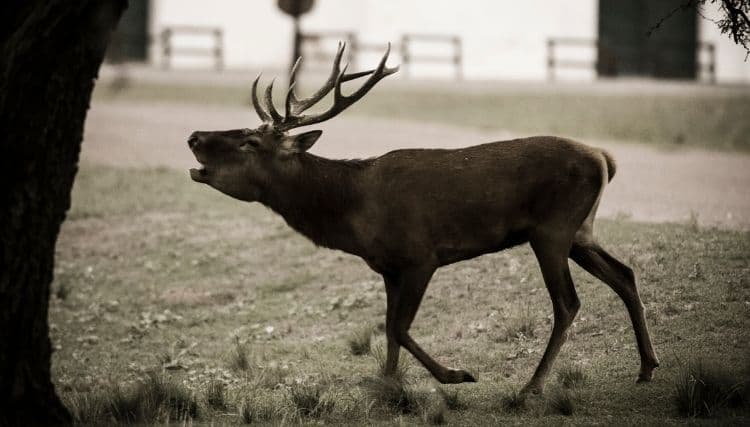
It can be tough to get the information you need about animals. If you’ve ever wanted to know all there is to know about Marsh Deer Facts, then this guide is for you.
What is Marsh Deer?
The Marsh Deer (Blastocerus dichotomous) is a large species of deer that inhabits wetland areas in parts of South America, particularly in Argentina, Brazil, Bolivia, and Paraguay.
It is also known as the swamp deer or the river deer, due to its preference for living in areas with water sources such as marshes, river banks, and swamps.
What is Marsh Deer Facts Size?
Marsh deer are one of the largest species of deer in South America. Adult males, also known as stags, can reach a shoulder height of up to 1.2 meters (3.9 feet) and weigh between 150 to 200 kilograms (330 to 440 pounds). Adult females are smaller and usually weigh between 80 to 120 kilograms (176 to 265 pounds).
Habitat For Marsh Deer
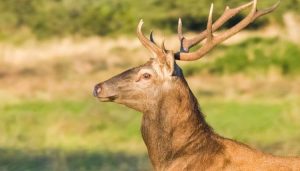
Marsh deer are native to the wetland habitats of South America, particularly in the countries of Argentina, Bolivia, Brazil, and Paraguay. They prefer to live in areas with dense vegetation, such as marshes, swamps, and floodplains near rivers or lakes. They are also commonly found in grasslands and savannas that are adjacent to wetland habitats.
In their natural habitat, Marsh deer depend on the availability of water sources for drinking and feeding, as well as for escape from predators. They are also adapted to living in areas that experience seasonal flooding, which can provide them with additional food sources and protection from predators.
However, Marsh deer populations have been declining due to habitat loss and fragmentation caused by human activities such as agriculture, ranching, and infrastructure development. Conservation efforts are being made to protect and restore wetland habitats for Marsh deer, including the creation of protected areas, habitat restoration programs, and efforts to reduce human-wildlife conflicts.
What is The Physical Description Of Marsh Deer?
Marsh deer are large and distinctive deer species, with a unique physical appearance adapted to their wetland habitat. Here are some physical characteristics of Marsh deer:
-
Size: Adult males, also known as stags, can reach a shoulder height of up to 1.2 meters (3.9 feet) and weigh between 150 to 200 kilograms (330 to 440 pounds). Adult females, or hinds, are smaller and usually weigh between 80 to 120 kilograms (176 to 265 pounds).
-
Coat: Marsh deer have a reddish-brown coat that is thick and coarse, which provides them with insulation in their wetland habitat. They also have distinctive white markings on their throat, underbelly, and tail, which help to distinguish them from other deer species.
-
Legs: Marsh deer have long and slender legs that are adapted for living in wetland areas, allowing them to move through the water and marshy terrain with ease.
-
Antlers: Adult male Marsh deer have antlers that can grow up to 1 meter (3.3 feet) in length. The antlers have a distinctive forked shape with three or four points, and they are shed and regrown each year.
-
Adaptations: Marsh deer have several adaptations that allow them to survive in their wetland habitat. For example, they can swim and dive, and their eyes are adapted to see underwater. They also have a keen sense of hearing and smell, which helps them detect predators and avoid danger.
Marsh Deer Reproduction -Breeding
Marsh deer breeding season usually occurs during the rainy season, which typically falls between October and March in their habitat. During this time, adult males will engage in displays of dominance and competition, such as antler wrestling and vocalizations, to establish dominance and attract females.
Once a male has established dominance, he will mate with one or more females within his territory. Females, also known as hinds, will give birth to a single fawn after a gestation period of around 8 months. The fawn will remain with its mother for several months before becoming independent.
Marsh deer hinds reach sexual maturity at around 1.5 to 2 years of age, while males reach sexual maturity at around 3 to 4 years of age. Marsh deer have a relatively low reproductive rate, with females typically producing one fawn per year.
How Long Does A Marsh Deer Live?
Marsh deer are elusive animals that are hard to track down in the wild because they are mostly active at night. The average lifespan of a marsh deer is 12 years with some living up to 16 years.
Marsh Deer Communication And Perception
Marsh deer use a variety of communication methods to interact with each other, establish dominance, and avoid predators. Here are some of the ways they communicate:
-
Vocalizations: Marsh deer can produce a range of vocalizations, including grunts, snorts, and bellows, which they use to communicate with other deer. Males will also use vocalizations during the breeding season to establish dominance and attract females.
-
Scent marking: Marsh deer have scent glands located on their forehead and around their eyes, which they use to mark their territory and communicate with other deer. They will rub their forehead and eyes on trees, bushes, and other vegetation to leave their scent.
-
Visual displays: Marsh deer will engage in visual displays of dominance, such as antler wrestling and posturing, to establish dominance and attract females during the breeding season.
In addition to communication, Marsh deer have well-developed senses that allow them to perceive their environment and detect predators. Here are some of their sensory adaptations:
-
Hearing: Marsh deer have excellent hearing, which allows them to detect the sounds of predators and other animals.
-
Vision: Marsh deer have good vision, with eyes that are adapted to see in low light conditions, which helps them to detect predators at night.
-
Smell: Marsh deer have a keen sense of smell, which they use to detect predators and locate food.
What Does Marsh Deer Eat?
Marsh deer are herbivores, and their diet primarily consists of a variety of aquatic and terrestrial vegetation. Here are some of the food sources that Marsh deer commonly eat:
Aquatic plants: Marsh deer feed on a variety of aquatic plants, such as water lilies, water hyacinths, and sedges, which grow in the wetland habitats where they live.
Grasses: Marsh deer also feed on a variety of grasses and sedges that grow in the savannas and grasslands adjacent to wetland habitats.
Trees and shrubs: Marsh deer will browse on the leaves and twigs of trees and shrubs, such as willows and acacias.
Fruits: Marsh deer will also eat fruits and berries when they are in season, such as guava and figs.
Marsh deer are adapted to living in wetland habitats, and their diet reflects the plant species that are available in these areas. They can extract nutrients from tough and fibrous vegetation, which allows them to thrive in their habitat.
What is Marsh Deer Role İn The Ecosystem?
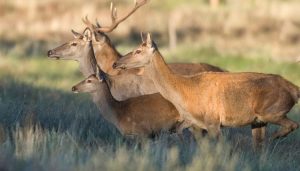
Marsh deer play an important role in their ecosystem as a herbivorous species that helps to maintain the balance of plant populations. Here are some of the ways that Marsh deer contribute to their ecosystem:
-
Grazing: Marsh deer are important grazers that help to control the growth and spread of plant populations. By feeding on a variety of vegetation, they help to prevent overgrazing and maintain a healthy balance of plant species.
-
Seed dispersal: Marsh deer also play a role in seed dispersal by consuming fruits and berries and spreading the seeds through their feces. This helps to maintain the diversity and distribution of plant species in their ecosystem.
-
Prey: Marsh deer are preyed upon by a variety of predators, such as jaguars, pumas, and anacondas. By serving as a food source, they help to maintain predator populations and provide energy and nutrients to the ecosystem.
Overall, Marsh deer play a vital role in their ecosystem as herbivores and prey species, helping to maintain the balance and diversity of plant and animal populations. As such, their conservation is important not just for the survival of the species itself but also for the health and functioning of their habitat and the broader ecosystem.
Marsh Deer Conservation Status
Marsh deer are currently listed as an endangered species by the International Union for Conservation of Nature (IUCN). The main threats to Marsh deer populations are habitat loss and degradation due to agricultural expansion, hydroelectric dam construction, and other human activities, as well as hunting and poaching for their meat and antlers.
Conservation efforts are underway to protect and restore wetland habitats for Marsh deer, as well as reduce hunting pressure on the species. The Brazilian government has established protected areas for Marsh deer, such as the Pantanal Matogrossense National Park, and conservation organizations are working to promote awareness of the importance of Marsh deer and their habitat among local communities and stakeholders.
Research is also being conducted to better understand the biology and behavior of Marsh deer, which can inform conservation strategies and management practices to help ensure the long-term survival of this unique and important species.
How Fast a Marsh Deer Run?
Marsh deer are known to be fast runners and can reach speeds of up to 35 miles per hour (56 kilometers per hour) when they need to escape from predators or other threats.
However, Marsh deer are adapted to living in wetland habitats and are better adapted for swimming than running, using their long legs and strong muscles to navigate through the water and marshy vegetation. When moving through water, they can reach speeds of up to 10 miles per hour (16 kilometers per hour).
How Many Marsh Deer Are Left İn The World?
It is difficult to estimate the exact number of Marsh deer that remain in the wild, but the species is considered to be endangered with a decreasing population trend. The IUCN estimates that likely less than 10,000 individuals are remaining in the wild, and the species is distributed across a relatively small range in South America, including parts of Brazil, Argentina, and Uruguay.
In some areas, local populations have already gone extinct, and the remaining populations are highly fragmented and vulnerable to habitat loss and hunting pressure. As such, conservation efforts are critical to protect and restore wetland habitats and reduce human impacts on the species to help ensure its survival for future generations.
Referans: Marsh Deer
Do marsh deer eat giant water lilies?
Marsh deer don’t eat giant water lilies, but they do enjoy eating other parts of the plant.
Why are marsh deer endangered?
Many factors have contributed to the endangerment of the marsh deer. Climate change is one of the major reasons. The increasing mercury levels in the earth’s atmosphere are negatively impacting these animals. The increase in sea levels has cut off their natural habitat, which was large swaths of marshland around coastal areas. Other factors include hunting and poaching, deforestation, pollution, and human-induced fires.
Where Do Marsh Deer Facts Sleep?
Marsh deer sleep near water sources or they will be seen at night near docks or boathouses. They may even sleep under boats or in bushes if possible.
What Plants Do Marsh Deer Avoid?
The study also found that they avoid the leaves of other types of plant life, such as sweetbay magnolia, red maple, and sweetgum. There are some other types of plant life that marsh deer will eat despite their aversion to many other types of vegetation. These include pennyroyal mint and Virginia creeper vines. The two key points to take away are that some plants are avoided by the deer but others are not and all vegetation is not necessarily avoided by them.
Can Marsh Deer Facts Swim?
Marsh deer can swim.
How High Can Marsh Deer Jump?
They are able to jump up to 7 feet high and 24 feet long, making them one of the best jumpers among all deer species.

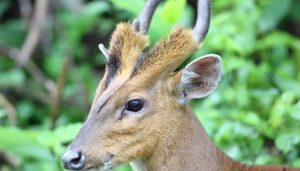
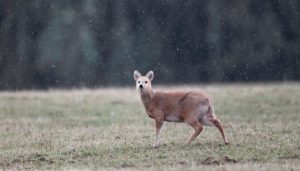
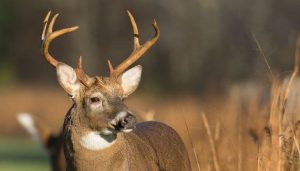
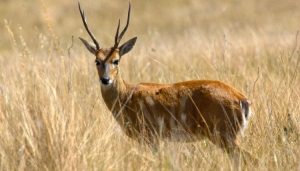
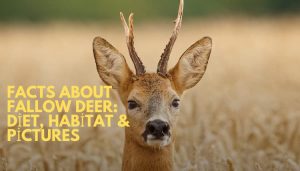
Leave a Reply